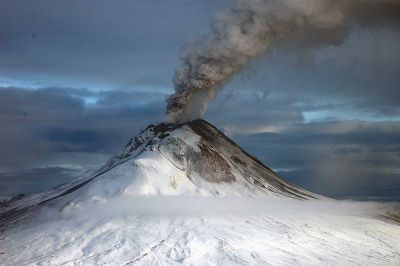Studies into lava
flow are fundamental to understanding the processes that shape our
dynamic Earth. In particular, knowledge regarding the stresses under
which magma behaves in a ductile or brittle manner is of paramount
importance for volcanology, geodynamics and planetary sciences. Strong
focus is placed on investigating the range of the brittle–ductile
transition zone.
Against this backdrop, scientists initiated the EU-funded project
'Rheophysics and energy of magmas' (RHEA). They sought to separate the
stable from metastable flow field of crystal-bearing melts and estimate
the onset of brittle behaviour. To help with this, work was geared
towards investigating experimentally and numerically the energy
distribution within magmas.
Scientists compared numerical simulations to samples deformed at
high pressures and temperatures, thus gaining better insight into the
processes involved during magma deformation. In particular, RHEA
developed one of the first numerical rheometers for measuring magmatic
suspensions based on real measurements and formulated new laws for
larger-scale models.
Project members employed a finite element method to model suspension
micro-hydrodynamic behaviour. Another technique based on
smoothed-particle hydrodynamics was used to compute flows. Although this
method focused on gravity mass flow deposits, the developed code can
potentially investigate the flow dynamics from the magmatic chamber to
emplacement.
The project team performed the first consistent study linking magma
brittle onset to crystal fraction. Experimental testing included
production of well-controlled synthetic magmas with various crystal
fractions. A high-temperature, high-pressure Paterson press allowed
measurement of viscosity.
Additional strength tests using cone and plate experimental
apparatus were performed using various analogue fluids. Particles such
as hollow spheres, glass beads and plastic particles helped mimic the
whole range of magma behaviour.
Oscillatory measurements helped scientists investigate the
suspension viscoelastic properties for various crystal fractions and
determine the onset of non-Newtonian behaviour for particle-bearing
fluids.
RHEA greatly contributed to enhancing understanding of the processes
involved during magma deformation. The developed models should find
application in a broad range of Earth science fields.
 EN
EN  CS
CS DE
DE ES
ES FR
FR HU
HU IT
IT PL
PL PT
PT РУ
РУ SK
SK TR
TR УК
УК AR
AR 中文
中文







